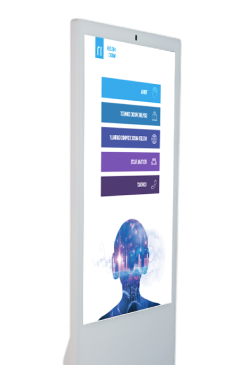

Event Solutions

Our Work

Modern Technologies for Remote Engagement
[embed]https://www.youtube.com/watch?v=859N10tY_Zg[/embed] As remote engagement has become more key, digital signage has evolved to let establishments expand the reach of their visual communications. We’ve known for years that digital signage is an extremely effective way to communicate with individuals. Four out of five corporations that use digital signage see an upsurge of up to one-third more sales, particularly in the retail division. More and more establishments are planning to implement a digital signage system in the next couple of years or upturn one they’ve already been using, including 56% of internal communications specialists in North America. Marketing messages seen on digital signs get 400% more views than static screens and have an amazing 83% recall rate. Businesses that use digital signage as part of their internal communications plan find their workers are 25% more useful and report a fourfold increase in worker engagement. And personnel who are acknowledged on digital signs feel more valued, which results in their being 60% more fruitful than folks who receive credit through other means. Stats about the efficiency and impact of digital signage have been trending upward for years and aren’t likely to lag any time soon. But how does adding remote workers into the mixture change things? Conventionally, digital signage required folks to be physically in a space, looking at a mental screen. To a certain extent, that’s still accurate. On the other hand, neither the individual nor the screen has to be in your workplace for it to be digital signage. Anything with a screen can be a digital sign. As content management systems have progressed, more and more endpoints have become obtainable. It used to be just displays attached to walls. Then digital touchscreens, video walls, and room signs came along to lengthen the reach for visual communications. Now the digital technology has developed again to let you send messages or playlists to open webpages, embed them in intranets, or even push them to enterprise apps like Teams. Some can even send your brand messages via email. These new endpoints, combined with traditional screens, can all be part of an all-inclusive visual communications network that lets you join with more folks in more workspaces – all managed from a sole source. By messaging out to folks where they are and the way they favor, you guarantee that everyone’s on the same page and more connected to the business as a whole. The trick for communicators is that omnichannel rational lets them accurately unify how they communicate. Don’t create an email, and then a brand message for digital signs and then another one for social media; create one that works on all those digital platforms and then schedule it to go out to all those various platforms at once. This gives your target audience the option to use the technique they like best, and it also provides support if they see your marketing message in more than one place.